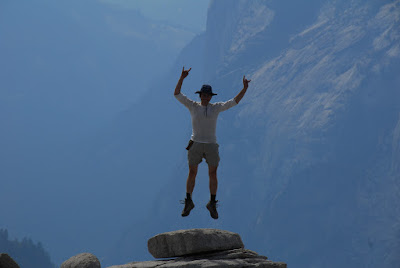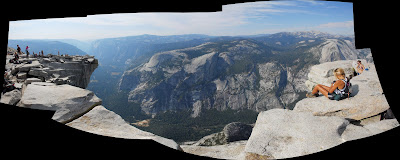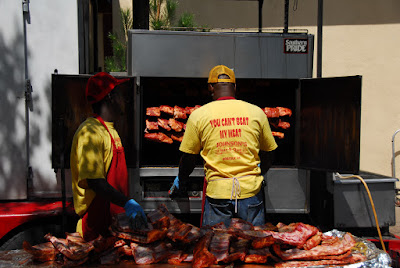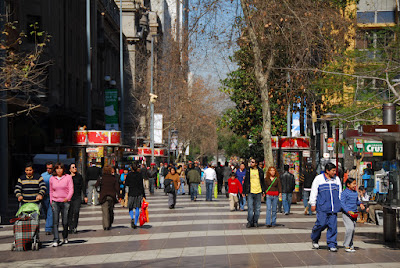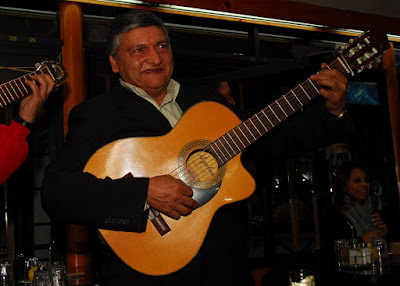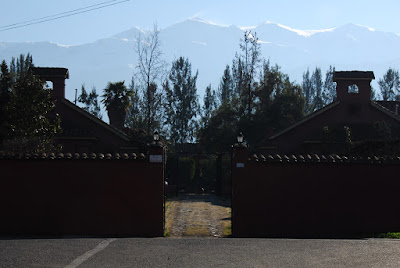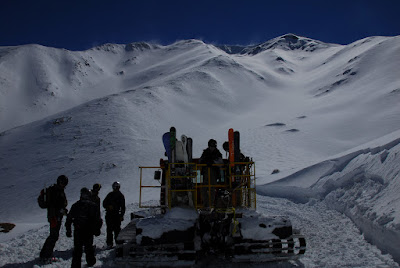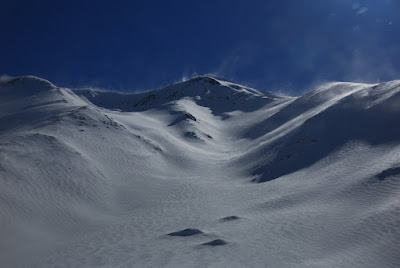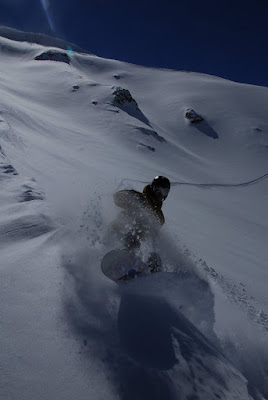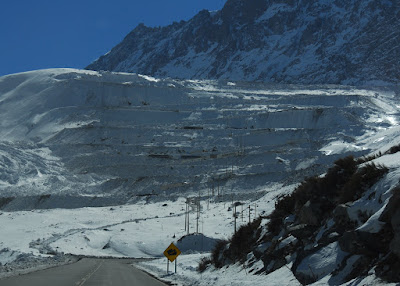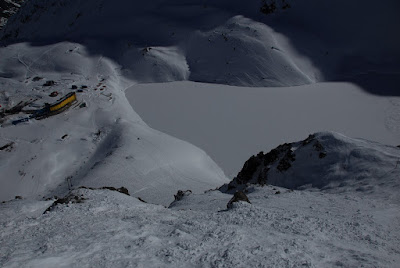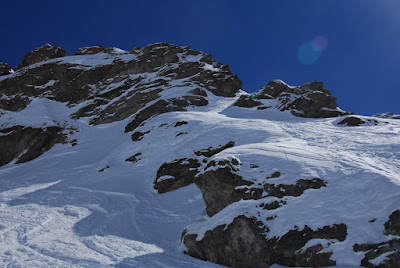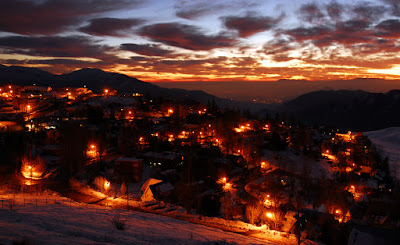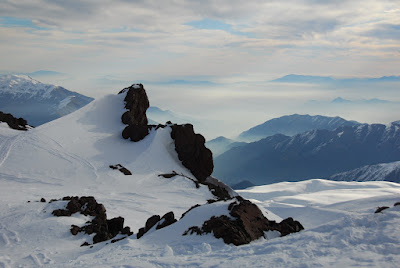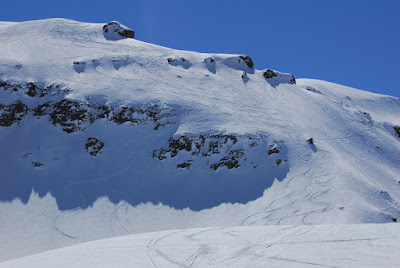
We setup the tent at Long Lake, and decided to hike up New Army Pass to Cirque Peak since the day was still young and we could nicely acclimatize to the high altitude this way. Not far from our tent, we crossed this little creek.

As we were climbing New Army pass, swiftly moving clouds appeared and we debated whether we might get wet. Luckily, the clouds ultimately remained east, north, and south of our trail. From the top of New Army pass, we took a first look at Mt. Langley. The clouds and the angle of the sun highlighted the rock faces on its south-eastern side.

Patches of little red flowers grow around 11800 ft.

As we hiked over to Cirque peak by following a lengthy ridge, we looked west into Sequoia National Park. For many miles, there are no roads or houses here, or any other signs of civilization - just wilderness, and plenty of fresh air.

We saw yellow flowers on the way to and at Cirque Peak at 12900 ft.

After a little discussion we decided to head down the north side of Cirque Peak, which does not have any trail. I ended up a tiny bit behind while messing around with my camera, ending up just in the right position to take this shot.

We were back at our camp site before sunset.

The next morning, we hiked up New Army Pass again, however this time we carried all our equipment because we were planning to come down Old Army Pass and camp at another lake that night. It was very windy throughout the day. This picture shows High Lake.

This picture is a panoramic shot from the top of New Army Pass. It starts north, with the lengthy bare mountain that has rock cliffs on its east side being Mt. Langley. Left (west) of that, one can see Mt. Whitney lurking. In the center, Long Lake and the South Fork Lakes are visible. The prominent peak behind the two boulders in the foreground is Cirque Peak - and there is the ridge line leading up to it which we had hiked the previous day.

While Langley was in plain sight the whole time, it still took us a while to get there. The wind was blowing hard, and as we took the switch backs and rock scrambles to the top, sometimes it blew in the right direction and sometimes not. Naturally, at the top of the 14er the wind was especially noticeable, though my attempts to take off were unsuccessful.

Looking north from Langley, the scenery is even more dramatic. Langley's north face is a cliff, and beyond that there are some lakes and more steep rock faces, and of course Whitney, the highest peak in the lower 48 states. Looking in this direction, it seems improbable how doable the hike up the south side of Langley is.

After lunch, we left the top of Langley and hiked towards Old Army Pass, which is in the same general direction as New Army Pass. The peak at the center of this panoramic is Cirque Peak.

Old Army Pass is a little steeper and the trail is narrower than New Army Pass. The rocks north of it are awesome looking.

We descended back below the tree line and set up camp between Lake 4 and an unnamed lake. This picture shows Langley just before we got to Lake 4.

The next morning was spectacular. The wind was gone, and the lakes were now perfect mirrors of the surrounding landscape.



After this gorgeous Monday morning, we hiked back to the parking lot and left the wilderness. Having been to the top of a 14er the day before, the first reaction upon reaching the valley floor near Lone Pine is to look back up the mountains and identify it.

For more pictures, check out my Picasa album of this hike.


